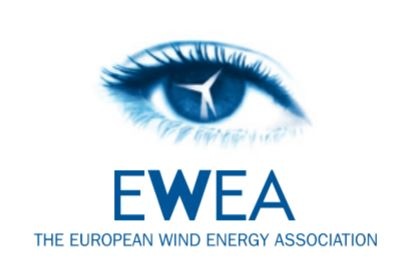News Release from WindEurope
Wind Industry Profile of
EWEA - Twitter chat: 5 priorities for a European Energy Union
Energy Union
"It is in everyone's interest that energy not be used as a political tool. It's time Europe stood tall on its own feet, pooling our resources, combining infrastructures and uniting our negotiating power." - Jean-Claude Juncker, President of the European Commission.
When six countries created the Coal and Steel Community more than 60 years ago, it marked a commitment by European governments to place common prosperity above national interests.
Today, European policy makers are facing an equally daunting and important challenge: the creation of a true European Energy Union in the era of climate change.
Europe’s ageing fossil energy system is in dire need of an overhaul. And the EU already has numerous tools to deepen coordination of energy policies across the Member States. Europe could give a significant boost to jobs and growth by speeding up the transformation of the energy sector with targeted and coordinated investments.
By 2030, Europe could have a fully functioning internal energy market delivering power and heating at favourable prices to citizens and private businesses across the continent. It could have a third of all energy supplied by renewable sources resulting in radically reduced expenses for imports of fossil fuels and massive co-benefits such as improved health and less air pollution. It could have a secure, steady and stable supply backed by innovative technologies for transmission and storage and harnessing synergies with an increasingly electrified transport sector.
For the Energy Union to be meaningful and bring benefits to all EU Member States, it will be necessary to look at the energy system as a whole and tackle physical and regulatory bottlenecks from a pan-European perspective. Under mandate and guidance from the European Commission, Member States and national bodies will need to pool resources, invest, cooperate and collaborate.
Ultimately, the Energy Union should make national regulations compatible with each other, first by pushing Member States to work more closely to favour macro-regional energy market integration and, as a second step, increase the integration of the regions into an EU-wide coordination.
The move to a single energy market with integrated legislation and integrated systems should make national energy markets an anachronism, not to the detriment of national sovereignty, but for the welfare of citizens and the economy.
The European wind industry sets out 5 priorities to give a concrete meaning to the Energy Union and to ensure the EU lives up to its ambition to be a global leader in renewable energy.
5 priorities for a European Energy Union
1. Guarantee stable frameworks
"The Union aims to strengthen private investment in phases of weak economic growth." - DECLARATION ON ARTICLE 126, TREATY ON THE FUNCTIONING OF THE EUROPEAN UNION
According to the IEA, the modernisation of Europe’s energy sector requires one trillion euros of investments by 2020. To attract this volume of investment, the Energy Union must be a vehicle for stabilising national energy policies giving financiers visibility to make informed decisions on investments.
What is the situation?
A disorderly patchwork of energy policies in the 28 Member States sends a confusing message to those in financial circles and would-be investors. Furthermore, they are faced with stop-start policies and often damaging retroactive changes, which can drive-up risk premiums and hinder the modernisation of the power sector by making it needlessly expensive.
What should we do?
With the Energy Union in mind, actions taken at national level should serve to complement the EU’s long-term climate and energy objectives by avoiding arbitrary changes to domestic policies. Not only would this reduce risk and upfront costs in the wind energy sector but it would also drive down electricity prices for consumers and in the long-run, remove the need for specific incentives.
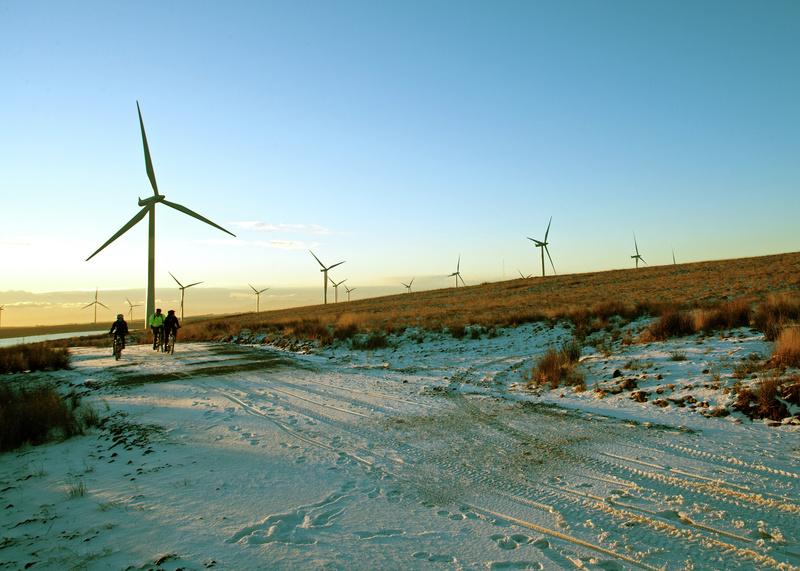
Case study- Onshore wind energy development in Germany and Austria
In Austria, unclear regulatory reforms and unexpected revisions created significant instability and hurt investor confidence in the middle of the 2000s. Consequently, the annual growth of wind capacity in Austria has been boom-and-bust.
In Germany, policies have been adjusted over time but there has been a regular thread in support of renewables for around 20 years. Thanks in large part to grandfathering of new regulations and consultation of the sector, investments continued and the growth in installed capacity has been relatively smooth.
Key actions:
- Ensure that all Member States meet the existing national renewable energy targets for 2020, using the monitoring tools outlined in directive 2009/28/EC.
- Come forward in 2015 with a governance system for the 2030 climate and energy package, assisting Member States in the delivery of the targets with clear timelines and paths for growth in renewable energy.
- Empower the European Commission to intervene when Member States make retroactive or retrospective changes to national energy policies via supportive legislation for renewables by 2018.
2. Supply energy security
"The Union aims to ensure security of energy supply." - ARTICLE 194, TREATY ON THE FUNCTIONING OF THE EUROPEAN UNION
The Energy Union should replace exorbitant energy imports with zero-carbon indigenous resources.
What is the situation?
The EU now imports more than half of its energy, often from unstable regions and at a high price. The EU imported 47% of its energy products in 2000; twelve years later the EU became even more dependent on external sources, buying-in 54% of its energy for €587 billion. To put this into perspective, the EU's energy trade deficit increased by 180% between 2004 and 2012 reaching €421 billion.
What should we do?
Member States can regain control over their energy supplies through diversification. Wind power deployment is well-placed to be the backbone of the EU's energy security strategy whilst significantly reducing Europe’s import bill. With a secure and clean power supply, Europe can reduce its reliance on energy imports by electrifying parts of the heating and transport sectors.
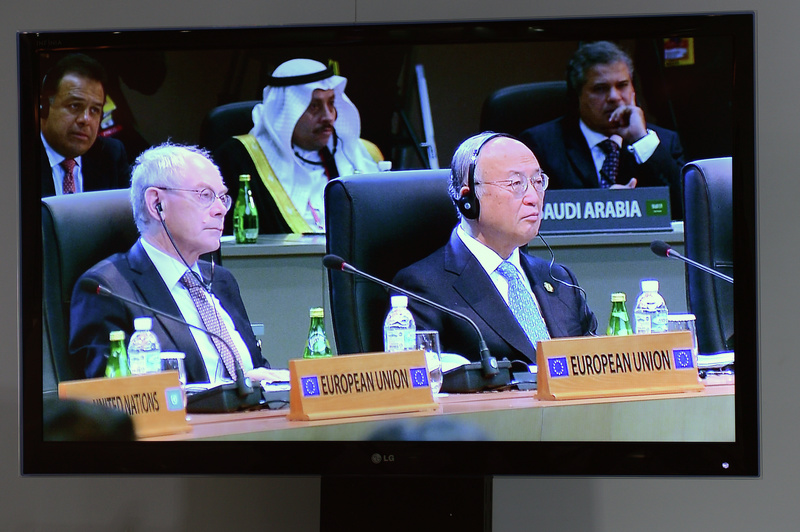
Case study - The North Sea powerhouse
In 2012, wind energy avoided €9.6bn of fossil fuel costs, offsetting the amount of support it received across the EU. In theory, an offshore wind farm with four sides of 424.37km using 5MW turbines can meet the entire electricity consumption of the EU.
Key actions:
- Develop an action plan for diversifying supply through deployment of indigenous sources in regions highly-reliant on energy imports.
- Reduce the energy trade deficit by ensuring that renewables are integrated in the energy security component of national actions plans in 2015.
- Apply a pan-European view on security of supply and mandate ENTSO-E to perform a generation adequacy test at EU level by 2020.
- Take first-mover risk to develop a 500 MW offshore wind farm in Poland before 2020 and provide risk capital for offshore wind farms using first-a-of-a-kind technology in the North Sea through co-financing by the European Fund for Strategic Investment.
- Advance electrification in transport, heating and cooling by including this in the EU investment programmes as part of the European Fund for Strategic Investment.
3. Complete the internal energy market
"The Union aims to ensure the functioning of the energy market." - ARTICLE 194, TREATY ON THE FUNCTIONING OF THE EUROPEAN UNION.
The Energy Union should establish a well-functioning European energy market to facilitate trade, enable fair competition and drive down costs for consumers and taxpayers.
What is the situation?
Today electricity is the last commodity that is not freely traded in Europe. Bottlenecks exist due to inadequate infrastructure and Member States are still lagging behind with their interconnectivity objectives. This has led to a paradox in Europe where overcapacity exists in some countries while others face the threat of blackouts.
What should we do?
The Energy Union should be the driving force behind European infrastructure. This should include better interconnection of the Iberian Peninsula and the Baltic States with the rest of the EU to ensure a higher penetration of emission-free wind power generation.
Transmission system operators and national regulators should increase cooperation at regional level to ensure the power market is brought up-to-date. In parallel, EU-wide market rules - known as Target Model - need to be revised to reward flexibility and further improve the cost efficient integration of variable energy into the grid.
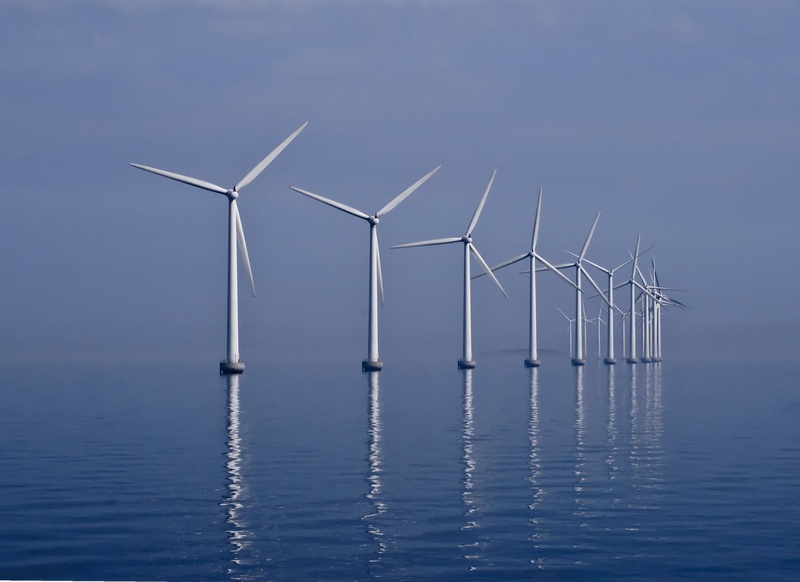
Case study - Northern Seas Offshore Grid
The European Commission’s own analyses show that annual savings could be €1.5 to €5.1 billion in 2030 with coordinated offshore grid development. The roll-out of a power grid in the northern seas could deliver it together with integrating offshore wind farms and increasing electricity flows across the EU.
€20 more for every European
According to a 2013 European Commission study, a full integration of EU’s electricity markets which includes coupling and liberalising can bring €10bn to €16bn to the power system by 2015, which would mean €20 per European per year.
Key actions:
- Ensure interconnectivity objectives are met by 2020 by benchmarking and ensuring financing for the European Projects of Common Interest increasing the EU’s 2030 interconnectivity target to 20%.
- Mandate ENTSO-E to develop market codes for grid support services including flexibility markets in 2016 to improve grid functioning and provide additional revenue streams to investors.
- Strengthen ENTSO-E and mandate it to optimise system operation and power market functioning through the establishment of regional and, subsequently, European system operation facilities as of 2020.
- Begin work on improved and smarter market rules – a Target Model 2.0 – in 2015.
- Broker compromises on cross-border cost sharing between national regulators and strengthen ACER to gradually become a more European regulator.
- Begin build-out of an HVDC meshed grid in the North Sea aligning wind farms with interconnectors, supporting a pilot project through first-mover financing that can be reproduced across the North Sea on a commercial scale.
4. Manufacture growth
"The Union aims to strengthen its scientific and technological bases." - ARTICLE 179, TREATY ON THE FUNCTIONING OF THE EUROPEAN UNION
The Energy Union should bolster leading European technologies in the renewable energy industry through proactive industrial, innovation and trade policies.
What is the situation?
Europe currently lacks an investment focus on strategic sectors, which has caused a decline of the industrial base. The current climate does not encourage investors to take the first-mover risk. First-of-a-kind projects and technologies that have high upfront capital costs are finding it increasingly difficult to find financing, while exports of innovative renewable technologies are hampered by restrictive trade practices in other countries.
What should we do?
By boosting and leveraging dedicated public funding to unlock private investments, the EU can maintain its first-mover advantage in wind energy while creating tens of thousands of high-skilled jobs. The European funding process for innovative projects should be clearer and easier to combine with other funds and should continue beyond 2020. The Energy Union should put its weight behind all negotiations on the free trade of environmental goods to boost exports in energy technologies where Europe is a global leader.
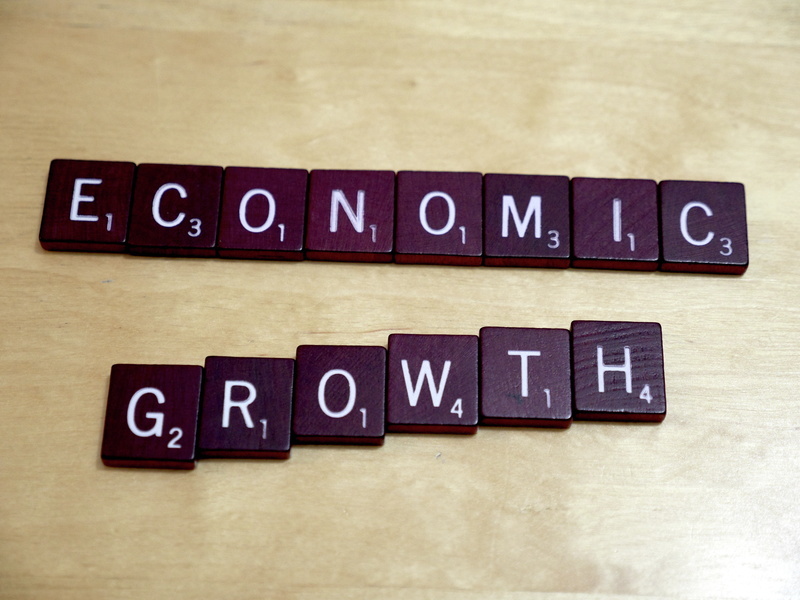
Case study - Profit strategy
The share of wind energy in the EU electricity consumption mix was 4.7% in 2009, grew to 8% in 2013 and is expected to double by 2020.
2009: The SET Plan acknowledged wind energy as one of the key energy technologies contributing to combating climate change, job creation and delivering green electricity.
2010: European wind turbine manufacturers spent around 10% of their total turnover on R&D activities, which is three times higher than the economy-wide average and well above the EU objective of 3% of GDP invested in R&D.
2012: 55% of world wind energy patent applications were from European countries, compared to 32.5% economy-wide. In addition, the EU benefitted from a net trade surplus of over €3bn in wind turbine components alone, DG ECFIN reports.
2020: Wind energy will cover 15-17% of the EU’s electricity demand, employing 354,000 people.
Key actions:
- Connect private investments with wind energy projects through grants, loans and risk guarantees under European programmes (for example Horizon 2020, European Fund for Strategic Investments).
- Ensure R&I policy is in line with EU energy policy targets by prolonging the SET-Plan to 2030.
- Establish high-level, cross-sector collaboration via a renewable technology accelerator platform spearheaded by the European Commission to systematically leverage finance for new energy infrastructure from institutional investors.
- Finalise WTO negotiations on liberalising trade in environmental goods and initiate negotiations on non-tariff barriers and services by end 2015.
5. Combat climate change
"The Union aims to promote measures at international level to deal with regional or worldwide environmental problems, and in particular combating climate change." - ARTICLE 191, TREATY ON THE FUNCTIONING OF THE EUROPEAN UNION
The Energy Union should promote a forward-looking climate policy as a catalyst for economic development.
What is the situation?
Climate change is increasingly becoming a burden on Europe’s economy. According to the EC funded ClimateCost project, the cost of climate change could reach 4% of the EU’s GDP by the end of the century. Yet there is still an irrational fear that concrete climate action - increasing zero-carbon domestic energy production - is incompatible with economic development.
What should we do?
There are two remedies: first, an ambitious global climate deal pricing CO2 emissions spurred by a combative EU; second, meeting the EU’s greenhouse gas-reduction target via a functioning ETS. To direct investments towards zero-carbon energy technologies, the Energy Union should eliminate the oversupply of allowances on the carbon market thereby avoiding a carbon lock-in.
Case study - Green job engine
The first round of the NER300 programme funded six wind energy and 17 other renewable energy projects of which 75% were highly innovative or game changing in the market. Subsequently, the €1.2bn of NER300 grants leveraged additional €2.8bn in private investments.
The 2014 Commission impact assessment of the 2030 climate and energy package revealed that wind energy creates more jobs than any other energy technology per MW installed, per MWh produced and per euro invested.
Key actions:
- Frontload ambitious ETS reform by proposing a revision to the linear reduction factor to 2.5 before December 2015 and additional measures to tackle the permit over-supply in the short-term such as a withdrawal of surplus allowances.
- Strengthen the ETS by introducing a Market Stability Reserve as of 2016.
- Work towards full auctioning of emission allowances for the entire European power sector without exceptions by 2020.
- Allocate ETS revenues, both on European and domestic level, to investments in climate-related projects, in particular deployment of innovative technologies.
- Take the lead in reaching a global climate agreement at COP 21 in Paris 2015, which includes a commitment of major CO2 emitters on carbon pricing.
Photo Credits: Creative Commons: Kim Hansen / Scottish Government /
If you would like to receive more information on this article, our Newsletter or find out more about what w3.windfair.net has to offer, please, do not hesitate to contact Trevor Sievert at ts@windfair.net.
Please don't forget to follow us on Twitter: w3.windfair.net on Twitter
w3.windfair.net is the largest international B2B internet platform in wind energy – ultimately designed for connecting wind energy enthusiasts and companies across the globe.
- Source:
- European Wind Energy Association
- Author:
- Edited by Trevor Sievert, Online Editorial Journalist / by EWEA Staff
- Email:
- ewea@ewea.org
- Link:
- www.ewea.org/...


